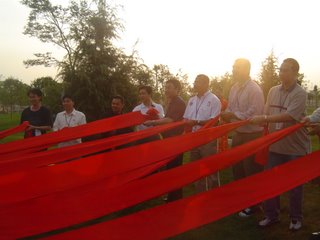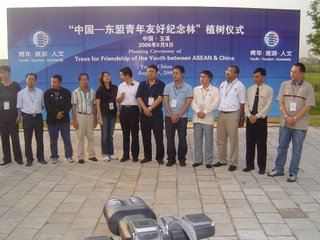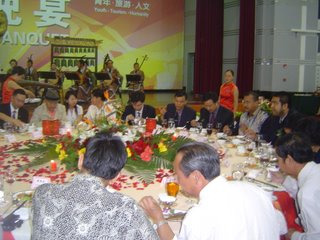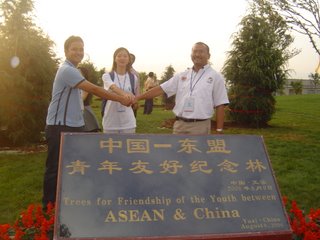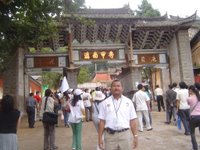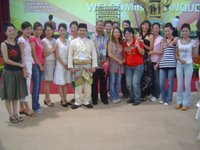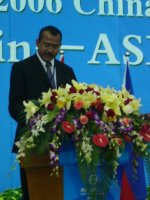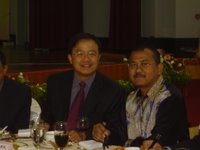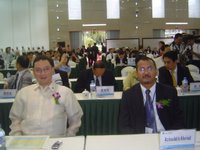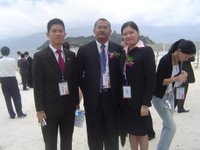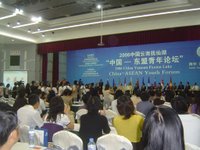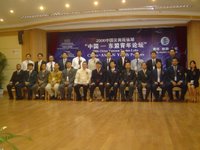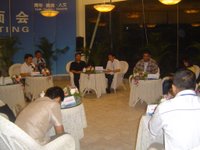Brief of Yunnan China
Yunnan is called "Yun" or "Dian" for short, located at latitude between 21°8'32" and 29°15' 8'' N and longitude between 97°31'39'' and 106°11'47''E. It is a vast land with towering mountains and plentiful rivers as well as abundant natural resources. The land area is 394,000 square km, the eighth largest province in China. The province has a total population of 41 million people, with 16 prefectures, autonomous prefectures and cities within its jurisdiction. Yunnan borders on Guizhou Province and Guangxi Zhang Ethnic Minority Autonomous Region to the east, Chongqing and Sichuan to the north and Tibet Autonomous Region to the northwest. To its west is Myanmar and to its south are Laos and Vietnam. The boundary line of China stretches 4,060 kms in Yunnan. About 94 per cent of the province is mountainous area. In short, Yunnan is a mountainous frontier province with many ethnic groups.
As the extension of the Qinghai-Tibet Plateau, Yunnan has an interesting geological structure. The Himalayan orogenic movement pushed up the "Roof of the World" from the ocean floor, forming several north-south mountain ranges and deep valleys. The Yunling, Nushan and Gaoligong mountains are narrow and precipitous. The Yangtze, Lancang and Nujiang rivers flow through the province. Between the Lancang and Jinsha Rivers (Yangtse River), is the source of the Yuanjiang River. The rivers roar and peaks tower over the valleys. The world-famous Nujiang Valley is found here. The valley extends from northwest to southeast like a fan, which cuts the Yunnan topography into two sections: the eastern section is the Yunnan-Guizhou Plateau with an average elevation of 2,000 meters and many small lakes; the western section is filled with mountains, rivers and valleys. From peaks to river valleys is usually a sheer drop, which creates a rugged terrain. The important water systems in southeast Asia are concentrated here, including the Jinsha, Nanpan, Lancang (Mekong), Nujiang (Salween), Yuanjiang (Honghe), Dulong (Irrawaddy) rivers. All of them are important passages between China and southeast and south Asia.
At the same latitude on the earth, there are the vast expanse of the scorching Sahara Desert, the tropical Hawaiian Islands and the Indian Plain. The complex geographical conditions give Yunnan a very varied climate. The province descends like a ladder from north to south, a distance of about 900 km as the crow flies. The highest point in the north is the Kagebo Peak in Deqin County on the Deqin Plateau, which is about 6,740 meters high; and the lowest is in the HongheRiver Valley in Hekou County, with an elevation of 76.4 meters. The terrain descends six meters every kilometer towards the south. The temperature difference between eight latitude degrees is the same as that from southern Hainan Island to northeastern Changchun in China. Therefore, we find not only glaciers and snow-capped mountains with alpine vegetation at the lowest latitude, but also sub-tropical basins, blazing hot valleys and lush tropical vegetation at the highest.
It is hard to believe that ascending one kilometer vertically means a climatic change by travelling 1,400 to 2,500 kilometers from the south to the north of China. While the mountain peaks are always covered with ice and snow; half way up you will enjoy pleasant weather; and at the bottom of the valley the weather is very hot. On one mountain,you can enjoy natural scenery and colorful folk customs from alpine to tropical zones.
People like to call Yunnan the province of "perpetual spring". If you do not come to Yunnan yourself, however, you will never know what we mean by "four seasons on one mountain and a changing climate within a small area". Because of its abundant natural resources, Yunnan enjoys the reputation of the "kingdom of flora and fauna", "kingdom of nonferrous metals", "kingdom of medicinal herbs", "natural garden", "hometown of perfumes" and is a popular area for tourism. Since remote antiquity, Yunnan has been inhabited. About 500 million years ago, duing the Cambrian Period, the earth experienced a big explosion, leaving some traces in the Maotian Mountain in Chengjiang County, central Yunnan. The ancient animal fossils found in Chengjiang were first announced to the public in 1984 by a paleontologist. This was one of the most amazing scientific discoveries in paleontology in the 20th century. They are dated as being between the Australian "animal fossils" and Canadian "animal fossils". It has been designated as one of the "three wonders of early evolution on earth" and has been put on the World Cultural Heritage List.
Yunnan is like a book, with its famous ancient cities of historic and cultural significance as different chapters, in which thousands of years of vicissitudes have been recorded.
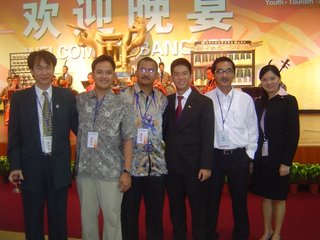
 . The role of youth organizations is to be broadened, particularly to promote the spirit of voluntarism among youth. Youth organizations would be entrusted to mobilize youth to fulfil the objectives of national unity and economic and socio-political stability while concurrently preserving the cultural heritage and maintaining national security.
. The role of youth organizations is to be broadened, particularly to promote the spirit of voluntarism among youth. Youth organizations would be entrusted to mobilize youth to fulfil the objectives of national unity and economic and socio-political stability while concurrently preserving the cultural heritage and maintaining national security.